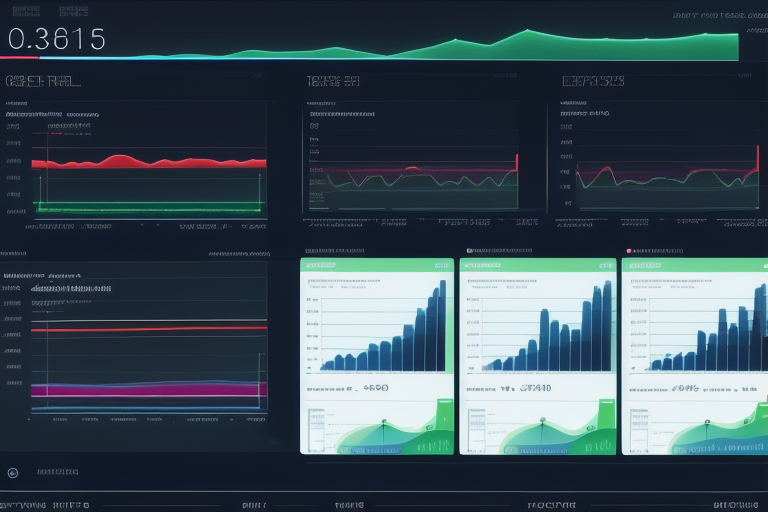
In today’s digital landscape, user experience has become a crucial factor in determining the success of a website. Recognizing this, Google introduced Core Web Vitals, a set of page experience and performance metrics, to help website owners optimize their online presence.
In this article, we’ll delve into the world of Core Web Vitals, exploring each metric and understanding how they contribute to improving user experience and SEO rankings.
We’ll also look at the tools you need to measure Core Web Vitals, plus some tips on how to improve your scores and website performance.
What are the Core Web Vitals?
Core Web Vitals are a set of key performance metrics introduced by Google to measure and evaluate the user experience of web pages. They consist of three main metrics, explained below.
These metrics provide insights into crucial aspects of page experience and help website owners and developers identify and improve performance issues that impact user satisfaction and search engine rankings.
- Largest Contentful Paint (LCP):
Largest Contentful Paint measures the time it takes for the largest element on a webpage to become visible to the user. It helps evaluate how quickly the main content loads and appears on the screen. A good LCP score ensures a fast-loading experience, engaging users from the moment they land on your page.
To interpret LCP results, consider the following thresholds:
- Good: LCP occurs within the first 2.5 seconds.
- Needs Improvement: LCP takes between 2.5 to 4 seconds.
- Poor: LCP exceeds 4 seconds.
- First Input Delay (FID)
First Input Delay measures the time between a user’s first interaction (such as clicking a button or selecting a menu) and the browser’s response to that action. FID focuses on interactivity and responsiveness, as it gauges how quickly users can engage with your website.
A low FID score is desirable, indicating a smooth and interactive experience:
- Good: FID is less than 100 milliseconds.
- Needs Improvement: FID ranges between 100 to 300 milliseconds.
- Poor: FID exceeds 300 milliseconds.
- Cumulative Layout Shift (CLS)
Cumulative Layout Shift measures the visual stability of a webpage during its loading process. It quantifies how much content shifts and causes unexpected layout changes, which can be frustrating for users.
CLS emphasizes the importance of delivering a visually consistent experience. Lower is better:
- Good: CLS is less than 0.1.
- Needs Improvement: CLS ranges between 0.1 to 0.25.
- Poor: CLS exceeds 0.25.
How can I view my Core Web Vitals?

Accessing Core Web Vitals information requires a combination of tools and resources, outlined below:
- Google Search Console
Start by accessing Google Search Console, a free tool provided by Google. If you haven’t already, verify and add your website to Google Search Console. Once your website is added, follow these steps:- Go to the Google Search Console dashboard and select your website property.
- In the left-hand menu, click on “Core Web Vitals” under the “Enhancements” section.
- Here, you’ll find an overview of your website’s Core Web Vitals performance. You can review the performance over time, identify issues, and track improvements.
- PageSpeed Insights
PageSpeed Insights is another tool provided by Google that assesses your webpage’s performance and provides insights on Core Web Vitals for individual pages on your site. Follow these steps to use PageSpeed Insights:- Visit the PageSpeed Insights website (https://developers.google.com/speed/pagespeed/insights).
- Enter your webpage’s URL and click on the “Analyze” button.
- The tool will analyze your webpage’s performance and provide a report with Core Web Vitals information. It will also offer suggestions for optimization.
- Lighthouse
Lighthouse is an open-source tool developed by Google that audits webpage performance and provides comprehensive reports, including Core Web Vitals data. You can access Lighthouse through multiple methods:- Google Chrome DevTools: Open Google Chrome, visit the webpage you want to analyze, right-click, and select “Inspect.” In the DevTools panel, click on the “Lighthouse” tab and run an audit. The report will include Core Web Vitals information.
- Lighthouse Chrome Extension: Install the Lighthouse Chrome Extension from the Chrome Web Store. Once installed, click on the extension icon in your browser’s toolbar, enter the URL you want to audit, and click “Generate Report.”
- Web Vitals JavaScript Library
The Web Vitals JavaScript library is a lightweight JavaScript library that allows you to capture and log Core Web Vitals data programmatically. You can integrate the library into your website’s code and customize how the data is collected and reported. The Web Vitals library provides functions to measure LCP, FID, and CLS and can be used in conjunction with other analytics tools.
These tools will all let you access Core Web Vitals information and gain valuable insights into your website’s performance. So now you have access to the data, how can you identify areas for improvement and optimize your website?
How can I improve my Core Web Vital Scores?

Largest Contentful Paint (LCP)
To improve Largest Contentful Paint (LCP), you can implement various optimization techniques that focus on reducing server response times and improving page loading. Let’s explore each of these strategies in more detail:
- Minimizing Server Response Times
Server response time refers to the time taken by the server to respond to a user’s request. Slow server response times can significantly impact LCP. To minimize server response times, consider the following actions:- Choose a reliable hosting provider: Ensure that your website is hosted on a server that offers good performance and uptime.
- Enable compression: Use compression techniques like GZIP to reduce the size of your website files, allowing them to be transmitted more quickly.
- Optimize database queries: Analyze and optimize database queries to minimize the time it takes to retrieve and process data.
- Implement caching: Utilize caching mechanisms, such as server-side caching or Content Delivery Networks (CDNs), to store frequently accessed data and serve it quickly to users.
- Optimizing Images
Images are often the largest elements on a webpage and can significantly impact LCP. To optimize images and improve LCP, consider the following steps:- Use the right image format: Choose appropriate image formats based on the content. For example, JPEG is ideal for photographs, while PNG is suitable for graphics and images with transparency. WebP is the most modern image format that provides superior lossless and lossy compression for images on the web.
- Compress images: Reduce the file size of images without compromising quality. Use image compression tools or plugins to achieve optimal image sizes.
- Resize images: Ensure that images are resized to the dimensions they will be displayed in on the webpage. Avoid using larger images and resizing them using HTML or CSS, as this can slow down loading times.
- Leveraging Browser Caching
Browser caching allows you to store certain resources on a user’s device, such as images, CSS files, and JavaScript files. When a user revisits your website, these resources can be loaded from the cache instead of being downloaded again, resulting in faster loading times. To leverage browser caching effectively:- Set appropriate cache headers: Configure the cache headers on your server to specify how long the resources should be cached by the user’s browser.
- Install caching plugins: If you’re using a content management system (CMS) like WordPress, install caching plugins that can handle browser caching settings automatically.
- Version your files: When making updates to your website’s resources, use versioning techniques like appending query strings to the file URLs. This ensures that when you make changes, the updated resources are fetched instead of using cached versions.
- Prioritizing Critical Resources
To improve LCP, it’s crucial to prioritize the loading of critical resources that are necessary for the initial rendering of above-the-fold content. Here’s how:- Inline critical CSS: Embed critical CSS directly into the HTML document or include it within the head section to eliminate the need for additional HTTP requests.
- Defer non-critical JavaScript: Delay the execution of non-essential JavaScript code until after the initial page load or make use of async and defer attributes to control when scripts are loaded.
- Asynchronously load resources: Load non-critical resources, such as social media widgets or third-party scripts, asynchronously to prevent them from blocking the rendering of the main content.
By implementing some of these optimization strategies, you can significantly improve LCP and provide users with a faster and more engaging browsing experience.
First Input Delay (FID)
To optimize First Input Delay (FID), it’s essential to focus on minimizing third-party scripts that might delay user interaction. Here’s how:
- Minimize JavaScript Execution Time
JavaScript plays a crucial role in adding interactivity and dynamic functionality to websites. However, poorly optimized or excessive JavaScript can cause delays in response time, resulting in a poor FID. You can minimize JavaScript execution time by:- Reviewing and optimizing your JavaScript code by removing unnecessary or redundant code, reducing function calls, and using efficient algorithms and data structures.
- Bundling multiple JavaScript files into a single file and minifying it to reduce file size, thereby reducing the time required for parsing and execution.
- Load non-essential JavaScript asynchronously, allowing critical tasks to complete quickly and improving overall page responsiveness.
- Prioritize Critical Tasks
Identify and prioritize critical tasks that are essential for interactivity and user engagement. By ensuring that these tasks are handled promptly, you can reduce the FID and provide a more responsive experience. Consider the following approaches:- Divide complex tasks into smaller, manageable units, enabling the browser to process and respond to user interactions more efficiently.
- Review event handlers and ensure they execute quickly. Avoid long-running JavaScript operations within event handlers that could delay responsiveness.
- Utilize the requestIdleCallback API to schedule non-essential tasks during idle periods, allowing critical user interactions to take priority.
- Remove Non-essential Third-party Scripts
Third-party scripts, such as analytics trackers, social media widgets, or ad scripts, can significantly impact FID if they are not properly optimized. Consider the following steps:- Evaluate the value and impact of each third-party script on user experience. Remove any scripts that are not essential for your website’s core functionality or user engagement.
- Load non-essential third-party scripts asynchronously to prevent them from blocking critical tasks and delaying user interactions.
- Implement lazy loading techniques for third-party scripts, loading them only when necessary or when they become visible to the user.
Where relevant, implementing these will help improve FID and ensure a better user experience.
Cumulative Layout Shift (CLS)
To reduce Cumulative Layout Shift (CLS), it’s important to implement strategies that avoid the page from jumping around whilst loading. Consider these suggestions:
- Ensure Images and Iframes Have Explicit Dimensions
When images and iframes do not have defined dimensions in HTML or CSS, the browser may initially allocate space based on an assumed size, leading to unexpected layout shifts once the actual dimensions are determined. To mitigate this issue, follow these best practices:- Specify dimensions in HTML or CSS: Ensure that both images and iframes have width and height attributes defined in the HTML or CSS code. This allows the browser to reserve the necessary space, preventing sudden shifts when the content is loaded.
- Set aspect ratios for responsive images: When working with responsive images, use CSS techniques such as intrinsic ratio containers or padding-bottom hacks to maintain the aspect ratio while adapting to different screen sizes.
- Avoid Inserting Content Dynamically Above Existing Content
Dynamic content insertion, such as ads, pop-ups, or late-loading elements, can cause layout shifts if they are added above existing content. These shifts can be disruptive and negatively impact the user experience. Consider the following strategies:- Reserve space for dynamic content: When designing your webpage, allocate space for any dynamic content that may be loaded later. Use placeholders or predefined container sizes to maintain the layout stability until the dynamic content is fully loaded.
- Load content below the fold: If possible, load non-critical or delayed content below the fold, so it doesn’t affect the initial rendering and layout of the visible content.
- Use CSS Transitions and Animations Appropriately
CSS transitions and animations can enhance the user experience by adding visually engaging effects, but they can also lead to layout shifts if not implemented carefully. Here’s how to use them effectively:- Utilize transition and animation properties: Apply CSS transition and animation properties to ensure smooth and gradual changes in layout. Use them for elements that expand, collapse, or change position to maintain stability during transitions.
- Set appropriate durations and easing: Control the duration and easing functions of transitions and animations to create natural and visually pleasing effects without causing sudden shifts or jarring movements.
By implementing these practices, you can minimize Cumulative Layout Shift and provide users with a more visually stable browsing experience.
How does Core Web Vitals impact SEO?
Google has incorporated Core Web Vitals as a ranking factor to incentivize website owners to prioritize user experience, which is important for all websites.
By signaling the importance of user experience, websites that prioritize optimizing these metrics are likely to see improvements in search rankings, user engagement, and overall organic search performance.
It’s crucial for website owners and SEO professionals to pay attention to Core Web Vitals and implement necessary optimizations to enhance the user experience and stay ahead in the competitive online landscape.
5 Practical Tips to Improve Core Web Vitals
Getting started with Core Web Vitals can seem daunting, especially if you are not technical. Rather than getting bogged down in the detail, use these five principles to gain an overall improvement in your scores.
- Optimize Server Response Time
Reduce server response time by leveraging content delivery networks (CDNs), optimizing server configurations, and minimizing unnecessary redirects. - Compress and Optimize Images
Compress and resize images to minimize their file size without compromising quality. Use modern image formats, lazy loading techniques, and implement responsive design to improve loading times. - Prioritize Above-the-Fold Content
Ensure that critical resources needed to render above-the-fold content are loaded and displayed quickly. Consider code splitting, deferred loading, or async attributes for non-essential scripts. - Eliminate Render-Blocking Resources
Identify and address render-blocking resources that slow the page loading process. Optimize CSS delivery, defer non-critical JavaScript, and leverage browser caching. - Monitor and Improve Design Consistency
Regularly test and analyze your website’s layout to identify unexpected shifts and layout issues. Implement proper image and iframe dimensions, plan for dynamic content, and leverage tools like the Layout Shift GIF Generator.
In Summary
Core Web Vitals represent a significant shift in Google’s algorithm, highlighting the importance of page experience and performance metrics. By understanding and optimizing these metrics, you can enhance user experience, increase engagement, and improve your website’s SEO rankings.
Regularly monitor these metrics and implement optimization techniques to provide a fast, interactive, and visually stable browsing experience for your users. Remember to strike a balance between functionality and performance, ensuring that critical tasks take precedence while maintaining the desired level of interactivity on your website. You are unlikely to reach a point where your scores are perfect, but by improving things where possible you will reap the benefits of improved search visibility and organic traffic.




